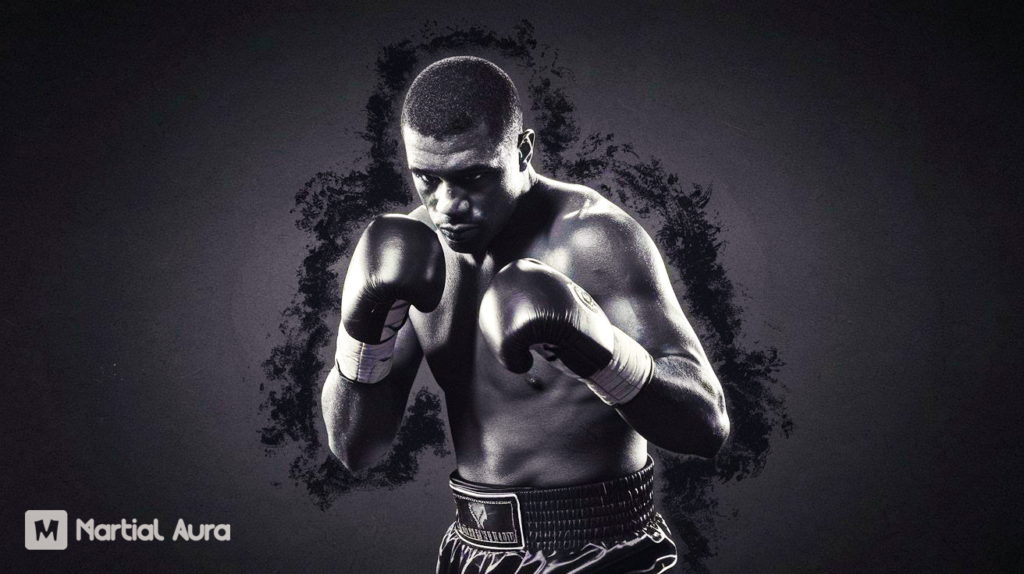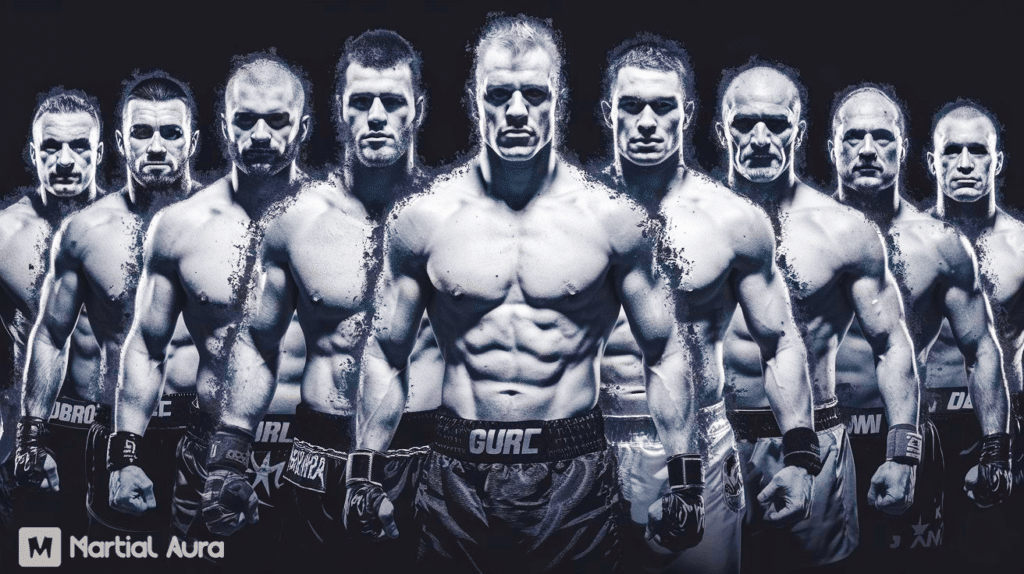In the electrifying world of combat sports, few phrases carry as much weight as “pound for pound” (P4P). This concept has sparked countless debates, fueled passionate discussions, and become the holy grail for fighters across weight classes.
But what does it mean, and why does it matter so much? Let’s dive into the heart of this intriguing metric that’s revolutionized how we view skill in combat sports.
The Origins(Boxing’s Great Equalizer)

The term “pound for pound” first punched its way into the boxing lexicon in the 1940s. Sportswriters coined it to compare fighters across different weight classes, essentially asking: “If all things were equal in size, who would come out on top?”
“Pound for pound, the best fighter in the world is Sugar Ray Robinson.” – Nat Fleischer, Ring Magazine founder.
This quote marked the birth of a concept that would change combat sports forever. Sugar Ray Robinson, a welterweight and middleweight boxer, became the first fighter to wear the P4P crown.
His unparalleled skill and dominance across weight classes set the standard for what it means to be truly great, regardless of size.
Breaking Down the Concept

At its core, the pound-for-pound concept is about skill, not size. It’s a hypothetical equalizer that asks us to imagine: What if all fighters were the same weight? Who would come out on top based purely on technique, speed, and fighting IQ?
Key Factors in P4P Assessment:
- Technical skill
- Speed and reflexes
- Power (relative to weight class)
- Ring/cage control
- Quality of opposition
- Achievements across weight classes
It’s crucial to understand that P4P is about more than who would win in an actual fight between a heavyweight and a lightweight. Instead, it’s a tool to appreciate and compare the skills of fighters who might never meet in competition due to size differences.
P4P in Action

While boxing birthed the P4P concept, it’s since spread to other combat sports, most notably mixed martial arts (MMA). The UFC, for instance, maintains its own P4P rankings, adding another layer of complexity to the debate.
Table: P4P Across Combat Sports
| Sport | Notable P4P Lists |
| Boxing | Ring Magazine, TBRB, ESPN |
| MMA | UFC, Sherdog, ESPN MMA |
| Kickboxing | Glory, LiverKick |
| Wrestling | FloWrestling (amateur) |
In MMA, the P4P debate takes on new dimensions. Fighters must excel not just in striking, but in grappling, wrestling, and submission skills. This multi-faceted nature of MMA makes P4P comparisons even more challenging – and fascinating.
The Science Behind P4P

Understanding P4P requires a grasp of how weight affects fighting performance. Heavier fighters generally hit harder, but lighter fighters often move faster. The P4P concept asks us to look beyond these physical realities to the underlying skills.
Key Physical Factors in Combat Sports:
- Force = Mass × Acceleration
- Power-to-weight ratio
- Cardiovascular endurance
- Muscle fiber composition
A lightweight fighter might not hit as hard as a heavyweight in absolute terms, but their speed and the number of strikes they can land in quick succession can be just as devastating. The P4P ranking attempts to account for these differences, focusing on technique, timing, and fight IQ.
P4P Rankings
P4P rankings are both revered and controversial. While they aim to provide an objective measure of skill across weight classes, the methodology can vary widely between different ranking bodies.
Common Criteria in P4P Rankings:
- Recent performance
- Quality of opposition
- Dominance in fights
- Championships held
- Activity level
- Performance across weight classes
The subjectivity in these rankings often leads to heated debates among fans, fighters, and pundits. For instance, how do you compare the dominance of a heavyweight knockout artist to the technical mastery of a flyweight?
P4P Legends

Let’s look at some fighters who’ve defined P4P greatness:
Boxing:
- Sugar Ray Robinson: Often cited as the greatest boxer of all time, Robinson’s skill and success across weight classes set the P4P standard.
- Floyd Mayweather Jr.: Undefeated in 50 professional fights, Mayweather’s defensive mastery and ring IQ kept him atop P4P lists for years.
MMA:
- Anderson Silva: His 16-fight win streak in the UFC, filled with spectacular finishes, made him the P4P king of his era.
- Georges St-Pierre: GSP’s well-rounded skill set and dominance in two weight classes cemented his P4P legacy.
These fighters exemplify what it means to be great pound for pound: exceptional skill, adaptability, and sustained success against top-level competition.
The Impact of P4P on Fighters’ Careers
P4P status isn’t just about bragging rights. It can significantly impact a fighter’s career:
- Increased Pay: P4P top-ranked fighters often command higher purses.
- Sponsorship Opportunities: Brands are eager to associate with the “best of the best.”
- Legacy Building: P4P rankings play a huge role in how fighters are remembered historically.
For many fighters, reaching the top of the P4P list is the ultimate goal, transcending weight class championships.
Criticisms and Controversies
Despite its popularity, the P4P concept isn’t without its critics:
- Impossibility of True Comparison: How can we really compare fighters who never compete against each other?
- Bias in Rankings: Popularity and marketability can sometimes influence rankings.
- Weight Cutting Issues: Extreme weight cutting can give some fighters an unfair advantage in their weight class, skewing P4P perceptions.
These criticisms highlight the inherent challenges in creating a truly objective P4P ranking system.
The Future of P4P
As combat sports evolve, so too does the P4P concept. We’re seeing:
- Advanced Metrics: Use of data analytics to refine rankings.
- Global Influence: Social media and streaming are making P4P debates more global and inclusive.
- Cross-Discipline Comparisons: Increasing interest in comparing P4P greats across different combat sports.
The future of P4P rankings may lie in more sophisticated, data-driven approaches, but the passionate debates that fuel fan engagement are likely here to stay.

Conclusion
The pound-for-pound concept remains one of the most fascinating and contentious topics in combat sports. It challenges us to look beyond weight classes and consider the true essence of fighting skills.
While we may never reach a consensus on who truly deserves the P4P crown, the debate itself enriches our appreciation of these incredible athletes.
Whether you’re a hardcore fan or a casual observer, understanding the P4P concept adds a new dimension to how you watch and appreciate combat sports. It’s not just about who wins on any given night – it’s about recognizing and celebrating the pinnacle of fighting skill, regardless of size.
So, the next time you watch a fight, ask yourself: How would this fighter stack up pound for pound? The answer might just change how you see the sport.

James Wesley is a passionate martial arts enthusiast and the voice behind Martial Aura. With a deep love for UFC and combat sports, he shares expert insights and in-depth analysis on everything from fight strategies to athlete profiles. When he’s not writing, you’ll find him training or watching the latest fights, always learning from the best in the ring.






